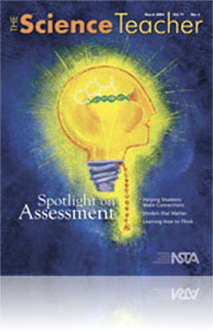All The Science Teacher resources
Journal Article
Career of the Month: An Interview with Microbiologist Dale B. Emeagwali
Although invisible to the naked eye, viruses, bacteria, fungi, and parasites can be found everywhere, from the air we breathe to inside our favorite foods. Microbiologists investigate how these organisms exist and affect our lives. Dale B. Emeagwali ...
Journal Article
Idea Bank: Melting a Misconception
The following lab was originally designed to teach the importance of manipulating a single variable in an experiment. However, the lab also dispels a common misconception, teaches the value of following lab instructions, and provides a good working d...
Journal Article
In this article, the authors draw on their experiences as science teacher-researches and present practical guidelines for science teachers who want to learn more about conducting teacher action research. They participated in a yearlong collaborative ...
Journal Article
Helping Students Make Connections
Science teachers want their students to attain scientific literacy for applications beyond the classroom. Unfortunately, many students view school, and especially school science, as disconnected from their lives and interests. Project-based science (...
Journal Article
Outstanding Science Trade Books for Students K-12: Books published in 2003 (TST)
The books that appear in this annotated bibliography were selected as Outstanding Trade Books published in 2003. They are intended primarily for kindergarten through twelfth grade. They were selected by members of a book review panel appointed by the...
Journal Article
Poster presentations are one way scientists present their latest research findings at professional meetings. This format also works well in the classroom and gives students the opportunity to communicate the results of their experiments (perhaps the ...


